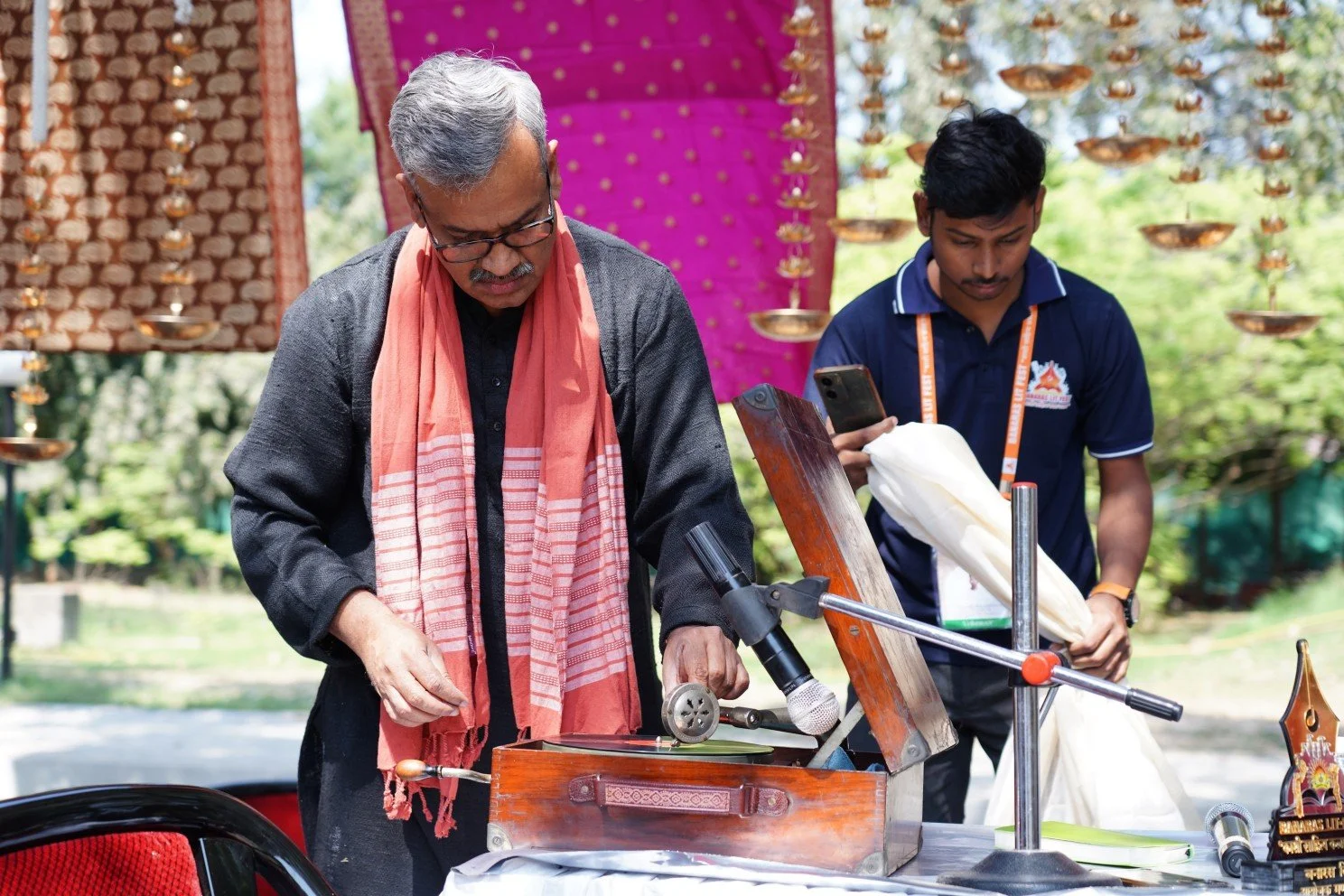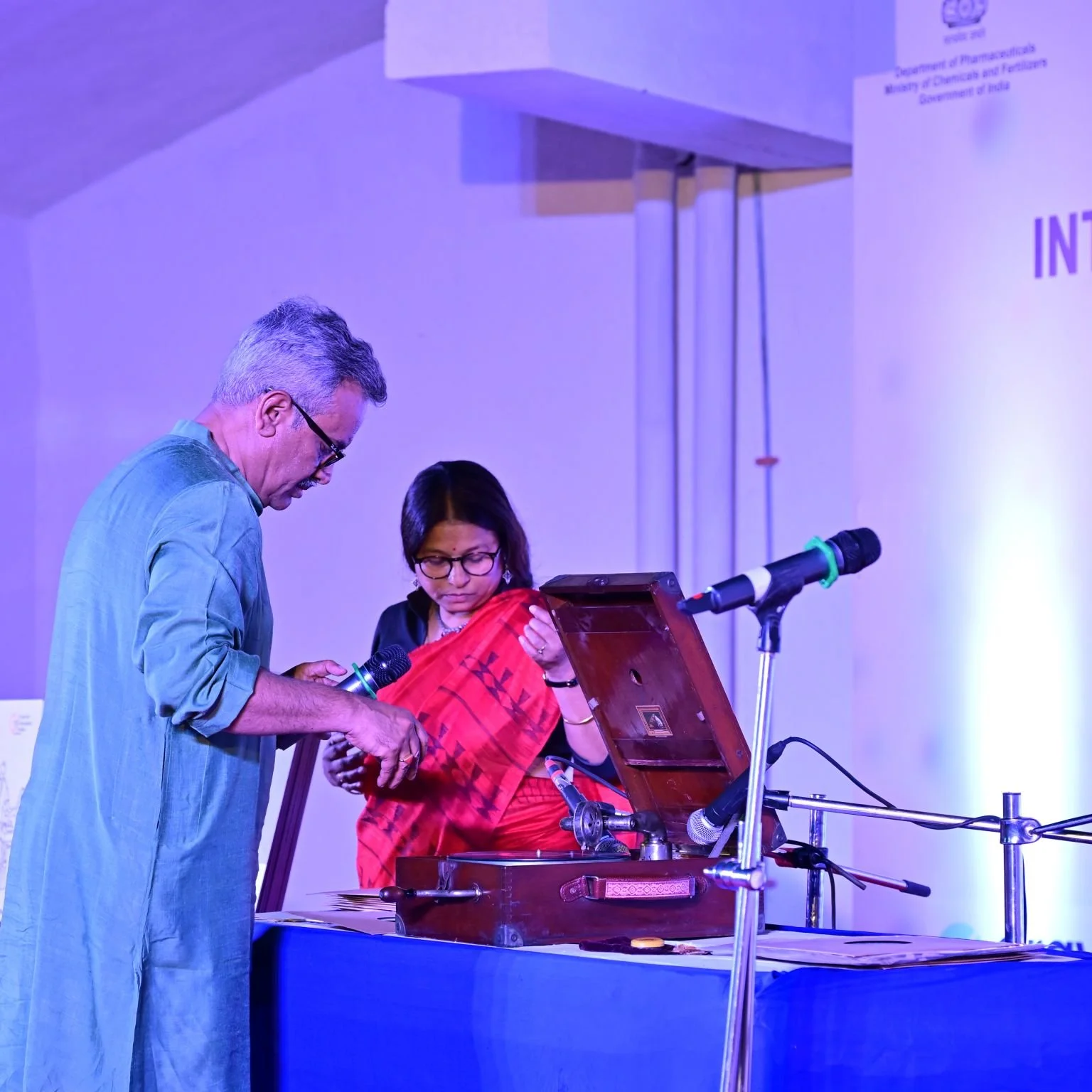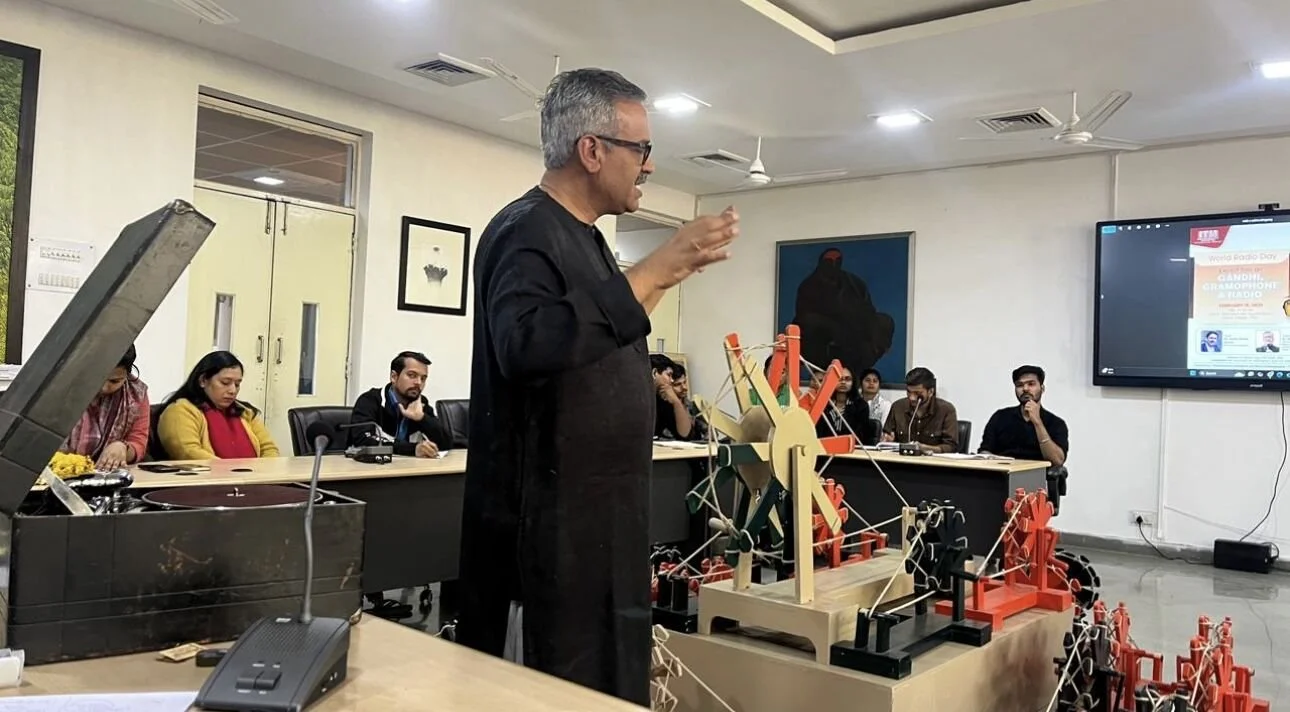Vande Mataram session in Chennai
It all begins with an idea.
Vande Mataram on Gramophone Records: A session at IITM-Pravartak in Chennai
The celebration of the 150th year of #VandeMataram—through the warmth and authenticity of #gramophone recordings—arrived in Chennai this month, adding yet another memorable chapter to this nationwide tribute.
What many may not know is that Subramanya Bharathi played an extraordinary role in taking Vande Mataram beyond the borders of Bengal. With unwavering devotion, he translated the song into Tamil, infused it with the fire of liberation, and made it a rallying cry of Indian nationalism. Bharathi was not simply a poet of Tamil Nadu; he was a national visionary—a champion of freedom from poverty, caste, illiteracy, superstition, and all forms of social stagnation.
And what better place to remember both Vande Mataram and Bharathi’s legacy than the inspiring grounds of #IITMadras?
The session began with the playing of Bharathi’s stirring song “Viduthalai”—a word that means freedom in Tamil. It struck me how naturally Tamil embraced Vande Mataram more than a century ago. If Tamil could adopt a Bengali song as its own anthem of liberation, why shouldn’t Viduthalai be celebrated in Hindi and other Indian languages as a universal symbol of freedom?
We also revisited the fascinating story of how Tamil Nadu became a pioneer in using gramophones for election propaganda, and how artists from theatre and cinema helped counter colonial narratives. This blending of culture, technology, and politics created a powerful space for nationalist expression—something we still have much to learn from.
In the second half, the focus shifted to the roles of Pandit Jawaharlal Nehru and Gurudev Rabindranath Tagore in shaping the destiny of Vande Mataram. Alongside gramophone playbacks, we walked through the deliberations of the Congress Working Committee meeting of October 1937 in Calcutta, and later, the Constituent Assembly debates, to understand how the song acquired its layered and sometimes contested history.
The experience was intellectually rich and emotionally resonant.
With IIT Madras now equipped with a fully functional gramophone and a trove of priceless records, I sense that this is just the beginning. Many exciting possibilities lie ahead—new conversations, deeper research, and perhaps more young minds discovering the magic of sound that needs neither electricity nor the internet.
The journey continues.
Vande Mataram on the Banks of the Ganga in Benaras
It all begins with an idea.
This is Banaras—where the Ganga glides by in her quiet majesty, and a mango orchard stands nearby, its trees fragrant and bursting into bloom. A small gathering has formed. People stand in silent respect. All for a song. For Vande Mataram.
On an old gramophone, a historic record spins. The same Vande Mataram record that the British once seized from Congress Radio in Bombay. Its melody was composed decades before Independence by Kamal Dasgupta, the music director of the Gramophone Company Limited. He had crafted a version of Vande Mataram so gentle, so universally appealing, that no one could object to it. It was he who first set the song to music as a chorus.
As the record played in Banaras, everyone rose to their feet. Emotions welled up. I felt it too. This year, Vande Mataram completes one hundred and fifty years—1875 to 2025. And Banaras holds a special connection: a century ago, when the song turned a hundred, it was this city that hosted the centenary celebrations with great dignity and depth.
I was in Banaras for the Banaras LitFest. I often play old gramophones, and this time I thought—why not bring one along? To my delight, people received it with genuine seriousness and warmth. For this occasion, I even brought out the very first Vande Mataram recording from my archive—released in 1905 from London, its label adorned with the Union Jack.
The session turned out to be immensely satisfying. I was in conversation with a wonderfully talented young woman named Aakriti. She left a strong impression—not just on me, but on everyone present. My sincere thanks to the organisers of the Banaras LitFest for creating such a memorable moment.
The Science of Sound, the Spirit of India
It all begins with an idea.
Akhilesh Jha and Rashmita Jha at a Gramophone session in Ahmadabad
The gramophone offers a remarkable way to understand India’s passage through history. Through its crackling grooves, we witness how the nation kept pace with scientific progress—even in the most trying circumstances—and how it subtly shaped trade and cultural dynamics.
At NIPER, Ahmedabad, during an international conference on Central Nervous System Disorders, Rashmita Jha and I were invited to share India’s story through the medium of the gramophone. Amid an esteemed audience of scientists and researchers, we—coming from the Vishuddh world of arts—found a meaningful space to connect, converse, and contribute.
Our talk explored how #MadeInIndia and #Swadeshi were not merely ideas but powerful movements during India’s freedom struggle—movements that even gramophone recordings carried forward. We also reflected on how this beautiful technology shaped the early music industry and influenced cultural imagination.
One of the highlights of the evening was playing a historic recording of Vande Mataram to mark its 150th anniversary—a moment that resonated deeply with everyone present.
A warm thank you to #NIPERAhmedabad, and especially to Dr. Pallab Bhattacharya, for curating such an inspiring, thoughtfully organised event. Rashmita and I returned with renewed pride—and a few more patrons for the enchanting world of the gramophone.
Gandhi, the Communicator: From Charkha to Gramophone
It all begins with an idea.
Gandhi and Gramophone Session in Gwalior
Gandhi was, in every sense, a remarkable communicator. His communication was never accidental or effortless—it was the result of deliberate discipline, relentless clarity of thought, and a deep understanding of human psychology. Every message he crafted, every word he spoke, every letter he wrote carried purpose.
He prepared rigorously for each of his speeches. Those who worked with him often recalled that he could revise a paragraph dozens of times until it expressed exactly what he intended—nothing extra, nothing missing. He surrounded himself with the most efficient people who could take dictations at his pace, and he reviewed every transcript with care. Even his correspondence was impeccably organised: letters received, letters sent, follow-ups, commitments—all neatly preserved. Gandhi understood that communication was also a form of accountability.
But what made him truly ahead of his time was his ability to embrace new technologies with curiosity rather than hesitation.
In 1931, he cut one of the bestselling gramophone records of that era—his Spiritual Message—released by Columbia Records. To think of Gandhi in front of a recording microphone, speaking to an unseen audience across continents, is itself a profound image. He recognised early on that sound recording would become a powerful archival tool, capable of carrying his voice far beyond where his physical presence could reach.
And when radio broadcasting began to include his speeches, Gandhi adapted immediately.
He modified the tone, structure, and length of his addresses, keeping in mind the format of radio and its time-bound nature. He was acutely aware that many of his radio talks were later circulated on gramophone records. So he timed his sentences, balanced pauses, and ensured that the message would fit perfectly within the recording constraints. This subtle interplay between technology and message, between medium and meaning, shows how Gandhi wasn’t just a communicator—he was a strategist of communication.
I had the opportunity to explore these ideas in depth during a session titled “Gandhi, Gramophone and Radio” at ITM University, Gwalior on the occasion of World Radio Day. The session was an enriching blend of history, technology, and reflection. The engagement with faculty members was thoughtful, but it was the students who made the experience truly memorable.
For most of them, this was their first encounter with a gramophone—a machine that speaks without consuming electricity or the internet. Watching their faces light up as the needle touched the spinning shellac disc was a joy in itself. They were mesmerised not only by the sound but by the simplicity of the mechanism. In an age driven by algorithms, this purely mechanical marvel—with its gentle whirr and warm sound—felt like a rediscovery of wonder.
In many ways, the gramophone is to sound what the charkha is to self-reliance—simple, handmade, meditative, and timeless. Gandhi understood the emotional and symbolic power of such objects. Just as the charkha became a tool for awakening consciousness, the gramophone carried voices that shaped a nation’s imagination.
To see the same sense of discovery in today’s students was deeply fulfilling.








